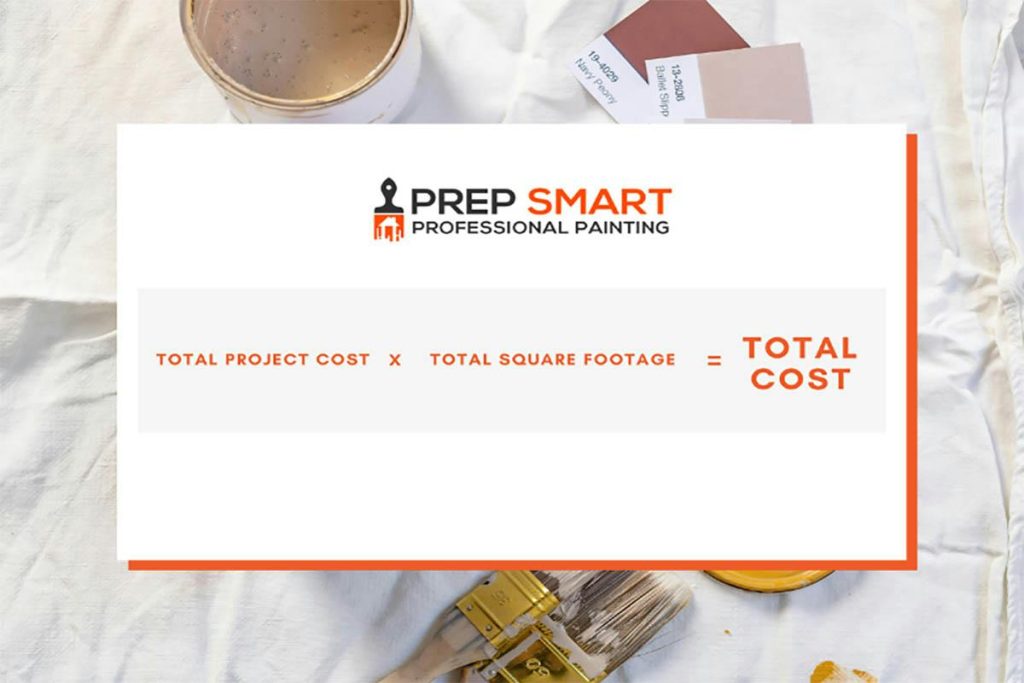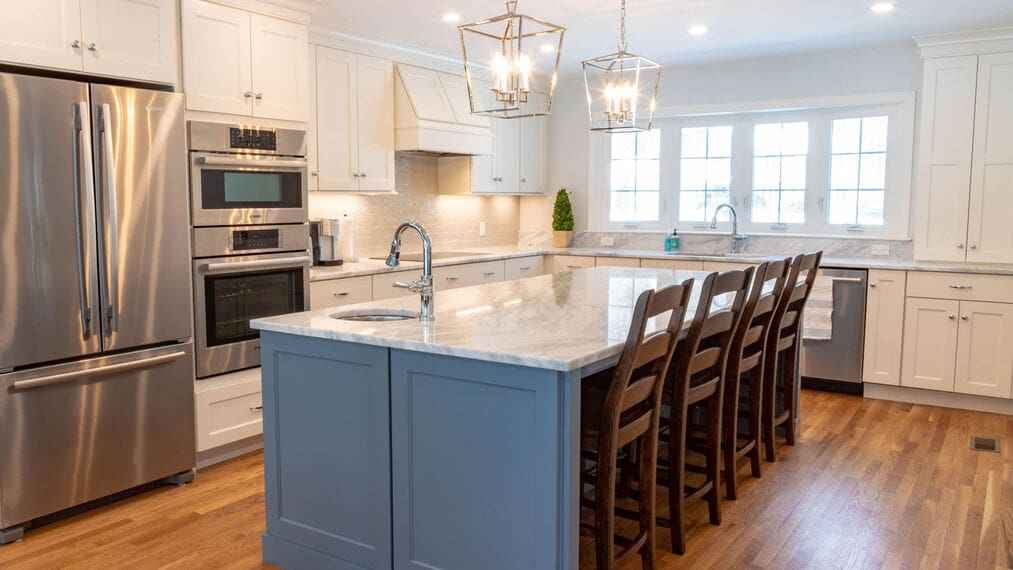
How Much Does It Cost Interior House Painters In 2023?
Introduction
When it comes to transforming your home, few things have as significant an impact as a fresh coat of paint. Hiring interior house painters for paint projects can breathe new life into your living space, but it’s crucial to understand the costs involved.
In this guide, we’ll delve into the various factors influencing the cost of interior painting and provide insights into potential savings. Whether you’re considering a DIY project or looking to hire professional help, the expertise of interior painting contractors can make a significant difference in achieving the best results.
Cost to Paint by Square Footage
Embarking on an interior painting project requires thoughtful consideration of average costs. Let’s explore how the expenses vary based on square footage and delve into specific details in the following sections.
Cost by Square Footage
According to Bob Villa, the typical cost for a professional paint job ranges from $2 to $6 per square foot, on average. Here’s a breakdown of the determining factors for calculating the cost of the square footage of the area to be painted :
- Square Footage Impact: Larger spaces generally have a lower cost per square foot to paint interior commercial building, benefiting from economies of scale. Consider this factor when planning your commercial painting project to optimize costs and achieve a cost-effective outcome.
- Project Complexity: The intricacy of the project, including architectural details or challenging surfaces, can influence the overall cost.
- Surface Types: Different surfaces may require specialized treatments and paint products, affecting the overall cost. For example, painting walls may cost differently than painting cabinets.
- Preparation Needs: The level of preparation required, such as repairing walls or priming surfaces, can contribute to the overall cost.

Painting Cost by Room
Embarking on an interior painting project involves addressing the unique characteristics of each room. Here’s a breakdown of the costs associated with painting various rooms in your home:
- Living Room:
- Typically large in size, the living room may have expansive walls and possibly high ceilings that may require more coats of paint can influence the overall cost.
- Furniture may need to be moved or covered by the painting crew for protection, adding to labor considerations.
- Bedrooms:
- Smaller than living rooms, bedrooms may have less wall space, affecting the total cost.
- The painting process may include considerations for accent walls or special finishes that may influence pricing.
- Kitchen:
- Kitchens often present challenges due to the presence of cabinets and appliances.
- Special attention may be needed in kitchens to address grease and moisture resistance, preventing the occurrence of a chip of paint on surfaces.
- Bathrooms:
- High humidity levels in bathrooms necessitate the use of moisture-resistant paints, especially when considering bathroom paint colors.
- The presence of tiles or other materials may require additional preparation.
- Hallways:
- Often narrow and with multiple surfaces, hallways may require meticulous attention to detail.
- Consideration for high-traffic areas may influence the choice of higher-quality paint, ensuring durability and longevity in frequently used spaces.
Cost by Interior Surfaces
Here’s a breakdown of the costs associated with painting different interior surfaces:
Cabinets
- Meticulous Preparation: Requires thorough preparation, including sanding and priming, to ensure a smooth and durable finish.
- High-Quality Paint: Cabinets endure frequent use, making the choice of high-quality, durable paint crucial to prevent issues such as paint peels over time.
Ceilings
Extra Care and Attention: Often requiring extra care due to its overhead location and direct visibility, demands special attention, especially when dealing with challenges such as cracks in ceilings, to achieve a professional finish.
Factors Influencing Costs: The height of the ceiling, its texture, and any necessary repairs contribute to the overall cost of ceiling painting. For instance, elevated ceilings or rooms with lofted designs may result in a price increase of 20% to 40%.
Doors
Focal Point Considerations: Doors are focal points in any room, demanding special attention.
Material and Size Impact: The type of material, size, and intricate details influence the cost of painting interior doors.
Trim
Finishing Touch: Trim, including baseboards and crown molding, adds a finishing touch to a room.
Special Considerations: Painting trim may require additional considerations, such as the need for multiple coats or intricate detailing.
Walls
Largest Surface Area: Walls, representing the largest surface area in most rooms, significantly impact the overall project cost. Achieving a uniform finish on walls is essential for a polished and aesthetically pleasing result.
Factors Affecting Costs: The number of coats needed, wall texture, wall height and any repairs required contribute to the total cost of painting walls.
Labor Costs
Here are the key factors influencing labor expenses:
Complexity of the Job: Handling intricate designs, detailed work, or challenging surfaces may demand more time and skill from your painting team to achieve optimal results.
Skill Level Required: Specialized techniques or the need for specific expertise can influence labor costs, particularly when relying on the skills of a professional painting company.
Duration of the Project: Longer projects may incur higher labor costs, especially if they require sustained effort over multiple days.
Surface Preparation: Extensive preparation work, such as repairing surfaces or addressing structural issues, can increase labor costs.
Project Size: Managing larger spaces or multiple rooms during a house painting project may necessitate more manpower and time to ensure a thorough and efficient completion.
The Cost of Painting The Interior Myself
Calculating Interior Paint Material Cost
For those considering a do-it-yourself approach, understanding how to calculate material costs is crucial. We’ll provide a step-by-step guide on estimating the amount of paint needed, choosing the right materials, and factoring in additional supplies.
- Measure Surface Area: Measure the height and width of surfaces you plan to paint and multiply for accurate measurements.
- Consider the Number of Coats: Some surfaces may require more than one coat for an optimal finish.
- Select Paint Type: Different areas have different purposes and may require different finishes, such as satin or semi-gloss.
- Calculate Paint Quantity: Most paint cans indicate the coverage area per gallon. Divide the total square footage by the coverage area to determine the number of gallons needed.
- Factor in Primer: If using a primer, calculate its quantity separately. Primer helps achieve a smooth finish and enhances paint adhesion.
- Account for Waste: Adding a buffer due to spillage, mistakes, or the need for touch-ups ensures you have enough paint to complete the project.
- Additional Supplies: Painting essentials such as tape, masking paper, drop sheets, rollers, paint brushes, buckets, grids, plastic, and test patch color samples contribute to an additional cost of around 20% on top of the calculated paint gallon expenses.
Paint Costs By Housing Type

Here’s a quick breakdown of cost variations associated with apartment painting, condo painting, and addressing common areas in multi-unit buildings, giving you insights into the cost to paint interior of house in various situations.
Apartment Painting – Limited Space Considerations
Quantity of Paint: Due to smaller living spaces, less paint may be required compared to larger homes. Calculate square footage precisely to avoid unnecessary excess paint.
Efficient Material Use: Consider smaller paint containers or inquire about pint-sized samples for accent walls.
Brushes and Rollers: Opt for smaller brushes and rollers suitable for tight spaces.
Paint Selection: Choose paint with good coverage to minimize the number of coats required. Saves paint, time, and effort.
Condo Painting – Association Regulations
Guideline Adherence: Check condo association regulations regarding paint colors, finishes, and application methods.
Approved Materials: Factor in the cost of using these approved paints, which may differ from standard options.
Professional Assistance: If the association requires professional painters, consider associated costs.
Painting Common Areas In Buildings -Shared Spaces
Cooperation and Coordination: Collaborate with neighbors to coordinate painting schedules for shared spaces. Shared efforts can reduce costs and ensure a cohesive look throughout the building.
Adherence to Building Rules: Adhere to building rules and regulations when selecting materials for common areas. Considerations for durability and ease of maintenance.
Bulk Purchases: If multiple units are participating in a common area painting project, consider bulk purchases of materials. Potential for negotiating lower prices.
Interior Paint Job Cost Savings
As we dive into specific strategies, from understanding professional tips to addressing common FAQs, you’ll discover how to enhance your home’s appeal without breaking the bank.
Can You Paint Inside in the Winter?
Undertaking an interior paint job during winter requires careful consideration of several factors to ensure a successful and cost-effective project. Here are key considerations:
- Temperature and Humidity: Ensure that the room is adequately heated and well-ventilated to facilitate proper paint drying.
- Ventilation: Use fans or opening doors to ensure proper air circulation, allowing the paint fumes to dissipate.
- Drying Time: Plan your project with ample drying time between coats to avoid issues such as streaking or smudging.
- Product Selection: Choose paints and primers specifically designed for low-temperature applications. l.
- Professional Assistance: For complex projects or if uncertain about the impact of winter conditions, consider consulting professional painters. Their expertise can ensure a high-quality finish even in colder weather.
Professional Painter Tip:
Unlock valuable insights from seasoned professionals to elevate the success and aesthetic appeal of your interior paint job. Here’s a curated list of insider tips:
Color Selection
- Professionals understand how different colors interact with lighting and space, ensuring a cohesive and visually pleasing result.
Test Samples
- Before committing to a color, test paint samples on a small, inconspicuous area. This allows you to see how the color looks in your specific lighting conditions.
Painting Techniques
- From cutting in edges to rolling and brushing, mastering these techniques contributes to a polished result.
Protective Measures
- Take protective measures for non-paintable surfaces. Use painter’s tape, drop cloths, and plastic sheeting to shield floors, furniture, and fixtures.
Conclusion
This guide has armed you with a thorough understanding of the factors impacting the cost of hiring interior house painters. Professional Painters in Rhode Island suggest that whether you’re leaning towards professionals or considering a DIY project, being mindful of these factors empowers you to make informed decisions. Professional Painters in Connecticut emphasize the importance of selecting interior painting services that match your vision and budget. Professional Painters in Massachusetts recommend considering solutions that enhance your home’s appeal and elevate your living experience through expert interior and exterior painting services.
Ready to transform your space? Consider selecting interior painting services from Prep Smart. Whether you’re focused on interior or exterior aesthetics, Prep Smart provides solutions that enhance your home’s appeal and elevate your living experience.





